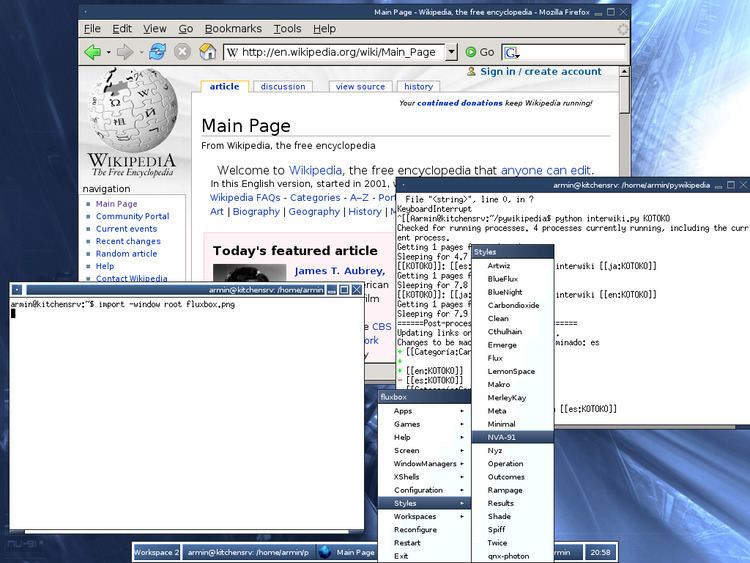Developer(s) Henrik Kinnunen Operating system | Written in C++ | |
 | ||
Stable release 1.3.7 / February 8, 2015; 2 years ago (2015-02-08) | ||
Fluxbox is a stacking window manager for the X Window System, which started as a fork of Blackbox 0.61.1 in 2001, with the same aim to be lightweight. Its user interface has only a taskbar, a pop-up menu accessible by right-clicking on the desktop, and minimal support for graphical icons. All basic configurations are controlled by text files, including the construction of menus and the mapping of key-bindings. Fluxbox has high compliance to the Extended Window Manager Hints specification.
Contents
Fluxbox can show some eye candy: colors, gradients, borders, and several other basic appearance attributes can be specified. Recent versions support rounded corners and graphical elements. Effects managers such as xcompmgr, cairo-compmgr and transset-df (deprecated) can add true transparency to desktop elements and windows. Enhancements can also be provided by using iDesk or fbdesk, or the ROX Desktop. Fluxbox also has several features Blackbox lacks, including tabbed windows and a configurable titlebar.
Because of its small memory footprint and quick loading time, Fluxbox is popular in many Live CDs such as GParted. It was the default window manager of Damn Small Linux and antiX, but was replaced with JWM in 2007 and 2009 respectively. It is currently the default window manager of PCFluxboxOS, a remaster of PCLinuxOS, and of Linux Mint Fluxbox CE. Fluxbuntu, an Ubuntu derivative with lightweight applications, was released in October 2007.
The early versions of Lumina, a desktop environment created for TrueOS, were based on Fluxbox.
Features
Customization
Customization is done by editing configuration files in the .fluxbox subdirectory in the user's home directory:
